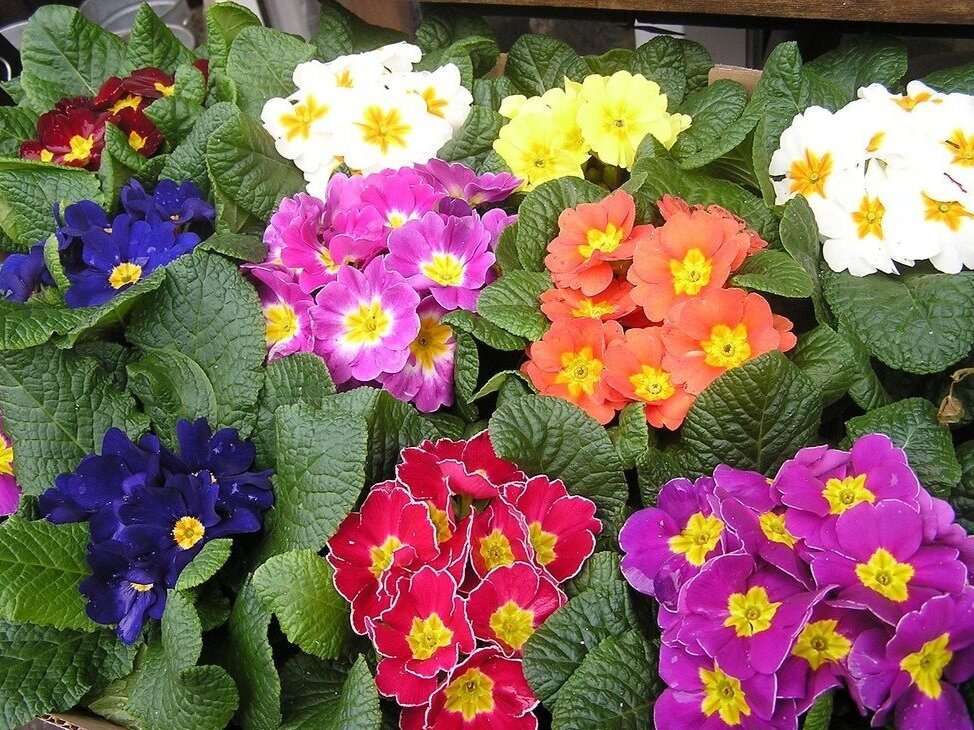Hello and welcome back to the fifth in a series of 12 posts about birth flowers! February’s birth flowers have such a quiet loveliness to them, and I think the softness of their beauty and the plethora of facts about their history makes them delightful to learn about! Enjoy!
February Birth Flowers: Primrose and Violet
Violet
Meaning: Modesty, faithfulness and virtue. If you gave someone a gift of violets in the Victorian age, you’d be telling them that you would be constant and loyal in your friendship or courtship.
Name Origin: The name violet comes from word ‘vias,’ which means ‘wayside.’ I’m not sure why its name is derived from that word, but perhaps it’s because violets like to trail along paths and riverbanks. If you’ve ever gotten violets and pansies mixed up, you weren’t as wrong as you thought, because the pansy is a species of the violet! The periwinkle or purple violet grows wild along the east coast of the United States and is the most commonly colored violet we Americans encounter. But there are also yellow, mauve and cream-colored violets that are more popular elsewhere.
History: Violets were cultivated by the Greeks as early as 500 BC. In their mythology, the violet represented the modesty of the nymph who swore herself a maiden but was pursued by her brother Apollo. To protect her from being violated, the Goddess Artemis turned her into a violet. In Christianity, the violet symbolized the modesty of the Virgin Mary. (See a pattern?) Roman mythology, however, claimed that Venus got jealous of all the maidens that were prettier than her, so she had them battered and bruised until they turned into violets. (Yikes!) Napoleon Bonaparte loved the violet so much, he made it his signature flower, and covered his wife’s grave with violet blooms. His friends called him “Corporal Violet” after he promised to return home from his exile in Elba before the violets bloomed. Some of Bonaparte’s loyal supporters determined who was truly loyal to him by asking his subjects how they felt about the flower; if they spoke warmly of it, they were loyal to Bonaparte. If not… well only history knows the consequences of that response!
Fun Facts:
· The Greeks used the violet to sweeten their wines!
· The Greeks also used the violet as an ingredient in love potions.
· Some say that the Greeks loved the violet so much that it became a symbol for their city of Athens.
· The violet is a perennial flower, and its blooms are often used to decorate fancy desserts because of their sweet flavor.
· African violets are actually not in the violet family! (“Lies, lies!”)
· The “Dooryard” violet, (found in the midwestern United States) is one of the very few flowers that blooms twice a year!
· The typical violet blooms at the end of February and can withstand the usual early Spring frosts.
· There is actually a chemical in the flower that desensitizes our sense of smell temporarily. That’s why violets smell beautiful but seem hard to get whiffs of!
· Legend says that St. Valentine used ink derived from the violets he grew in his letters.
· Hannah Flagg Gould speaks to the bravery of the delicate flower in her poem The Wild Violet
o “Violet, violet, sparkling with dew/down in the meadow-land,/ wild where you grew,/How did you come by the beautiful blue/with which your soft petals unfold?/And how do you hold up your/ tender young head/when rude sweeping winds/rush along o’er your bed,/and dark gloomy clouds/ ranging over you shed/ Their waters so heavy and cold?”
Primrose
Meaning: The Primrose symbolizes young love.
Name Origin: The Greeks called this flower the “dodecatheion,” or ‘flower of the 12 gods.’ The Evening Primrose is also called the ‘Evening Star.’ Lovely.
History: When the flowers were first brought to Europe in the 17th century, the Europeans delighted in their bright yellow blooms that opened up just as the sun was setting, (which is why they are called the Evening star.) During WWII, the seeds of the evening primose were roasted as a coffee substitute due to the sparse rations the military had to endure. The Cherokees and the Iroquois used the flower as a wound poultice and a skin treatment for rashes. The primose seems to enjoy growing wild in areas where soil was disturbed, such as old ruins, fallowed fields, and disused railroad tracks. (Fascinating.)
Fun Facts:
· The whole plant is edible, and if you go to your local vitamin shop you will find ‘evening primrose’ supplements on the shelves.
· In the Shakespeare play “Hamlet,” Ophelia tells her brother that he is ‘treading the primrose path of dalliance,’ though I don’t know the context. Still, it’s fun to hear flowers used in historical and literary references.
· The primrose is a perennial flower, and is remarkably heat and drought hardy, and deer seem to usually turn up their noses at it, making it a good addition to a cottage garden.
· It seems that, like the violet, the primrose was used to flavor wines in Grecian times, though, unlike the violet, it was the roots of the primrose that were used, and not the blooms.
The Yellow ‘Evening Star’ Primrose







